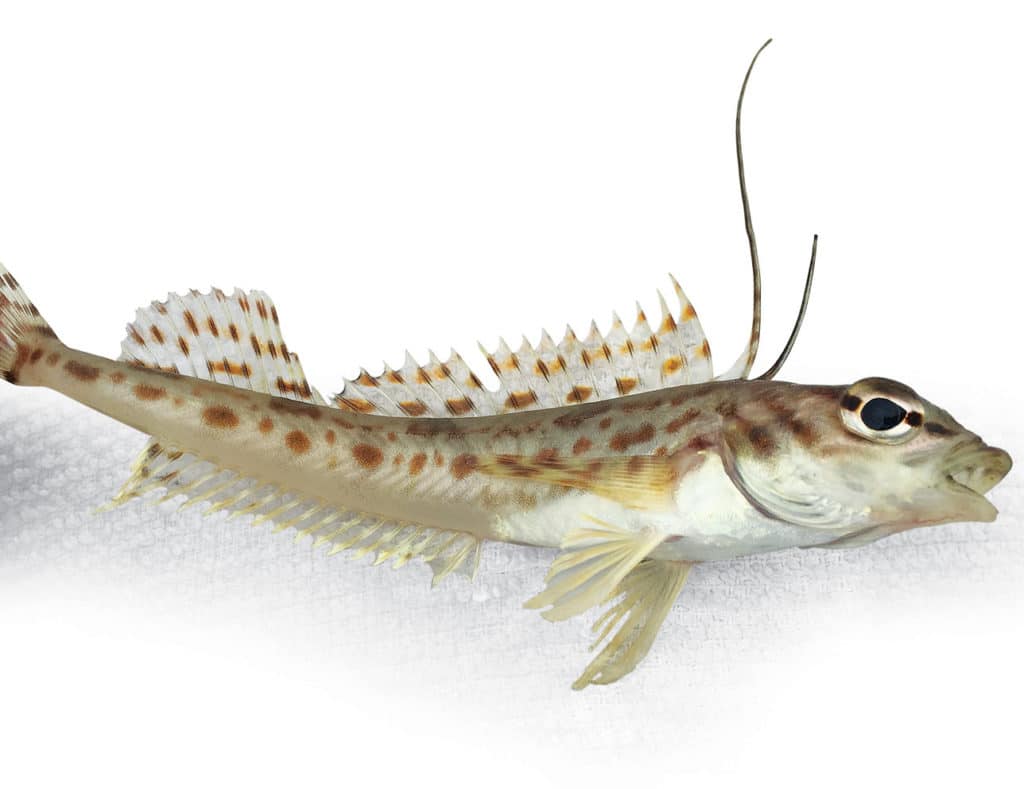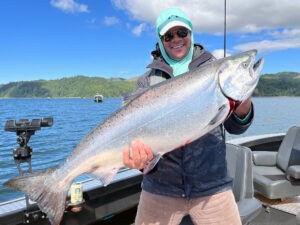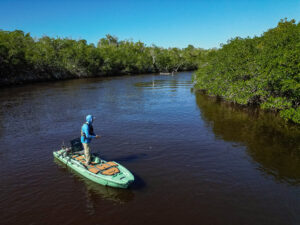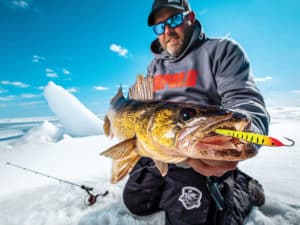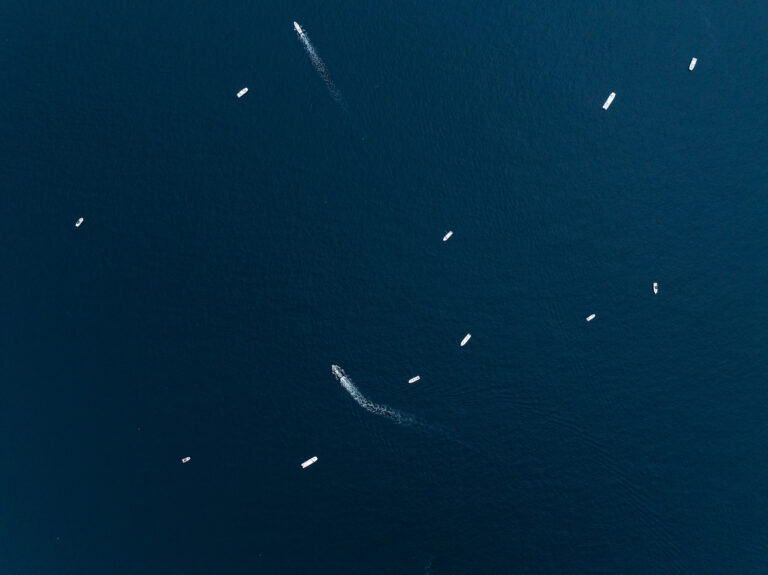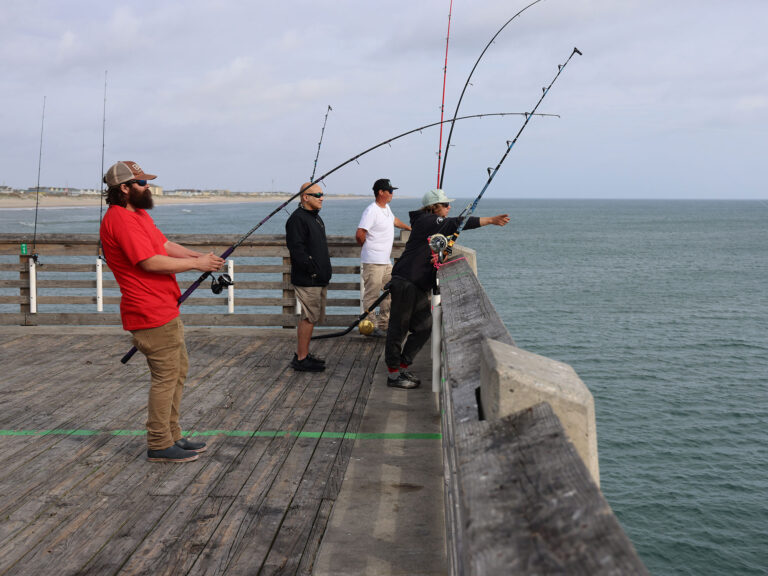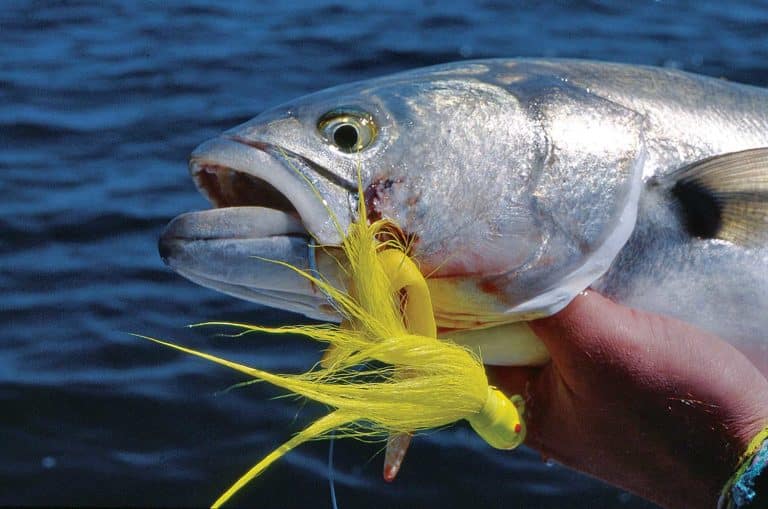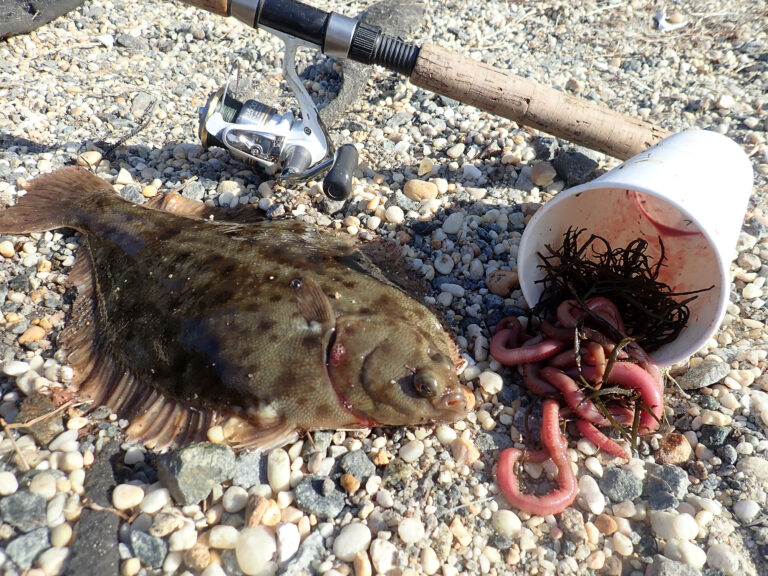In each issue of Sport Fishing magazine, a panel of five international expert ichthyologists identifies unusual and often amazing fishes in photos submitted by readers. Find out what they are and learn fascinating facts about them.
A Fish Too Ugly to Keep
QUESTION
We caught this thing north of San Carlos, Sonora, Mexico, during midwinter in 120 feet, on my charter boat, Margarita V. It had a giant, ball-shaped sack and tiny eyes on top of its head. We let it go, as it was too ugly to keep and probably extremely rare.
Bryan Replogle
Tucson, Arizona
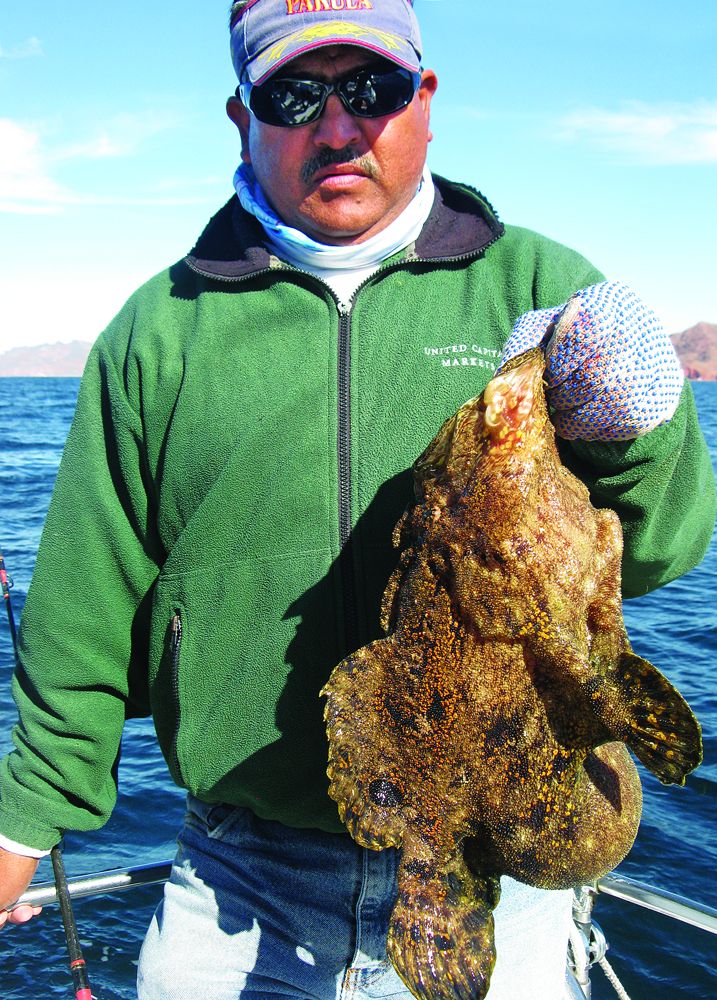
ANSWER:
Upon gazing at this remarkable fish, I think we can safely say: My oh my, what hath nature wrought? Well, in this instance, nature — obviously in a puckish mood — decided to wrought the roughjaw frogfish, Fowlerichthys avalonis. Frogfishes are a group of anglerfishes that spend their lives crouching on the seafloor, using the fleshy growth at the end of their first dorsal spine to lure in fish and invertebrates. While that lure is not visible in this image, it rather resembles a tiny cabbage. The roughjaw frogfish is the largest of all frogfishes, reaching about 21 inches in length, although the fish in the image looks like it might even exceed that. They’re found from Southern California to Chile, most commonly in tropical waters. Small ones are found in tide pools, and larger ones have been taken down to about 1,000 feet of water. I am not sure what that rather noticeable bulge in the gut region is, but given how voracious frogfishes are, I wouldn’t be surprised if it was something the fish had eaten. Another possibility is that this is a female and those are eggs.
— Milton Love
Disgruntled
QUESTION:
On a trip to the Shark River, our main river here in Trinidad, a friend and I were working our way up, fishing the rapids and pools, trying to catch what we call a river mullet. I caught this fish in a pool a mile or so upstream. It’s referred to locally as a river parg, freshwater grunt or river snapper, but no one can actually tell me what these are.
I have caught them before, at or near river mouths. I caught this 1½-pounder on a live crayfish, free-lined, after the fish refused several artificial offerings.
I noticed it made croaking noises when I held it. Also, it had no prominent canines, or any teeth, for that matter, and it had rubbery lips. I released it safely back into the pool to meet the three others living there.
I went to our Institute of Marine Affairs, and they sent the fish to the University of the West Indies — which wrongly identified it as a gray snapper. (I have caught hundreds of grays, and this isn’t one). I really hope you can help identify this little guy for me.
Stuart Hutton
Trinidad and Tobago Game Fish Association
Trinidad
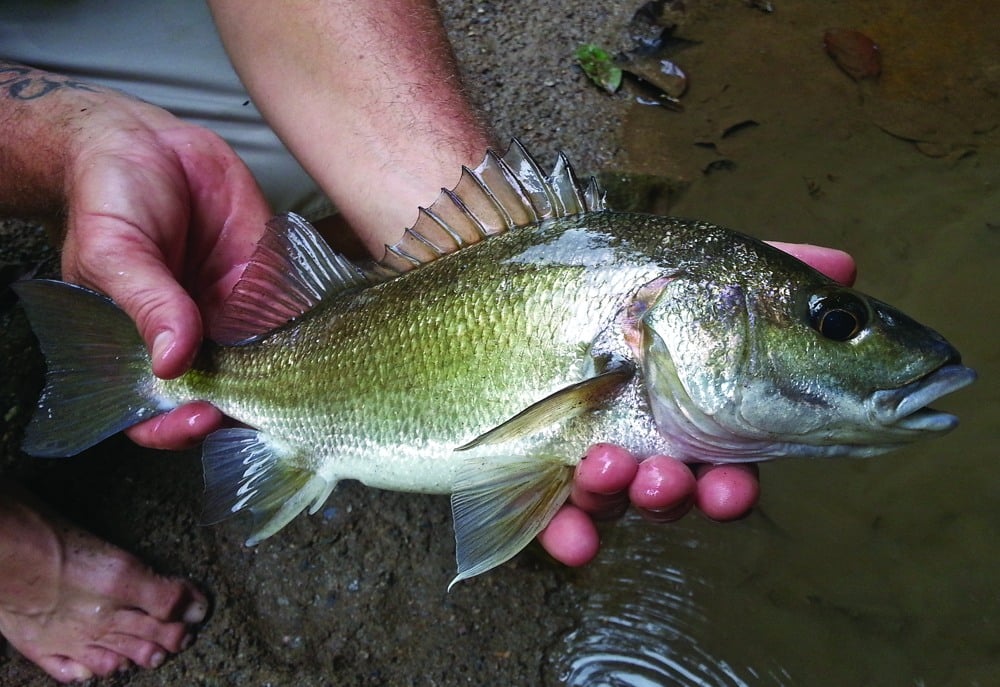
ANSWER:
Stuart, you caught a burro grunt, Pomadasys crocro. This species ranges from Florida to Brazil, including the eastern Gulf of Mexico and the West Indies. However, unlike most other grunts, it inhabits turbid rivers and estuaries, often in brackish and even fresh water. It attains a maximum length of around 15 inches and is sometimes marketed fresh. Although it is primarily a shallow-water species, it has been reported from depths approaching 400 feet.
— Ray Waldner
Hook ‘Em Hornsharks
QUESTION:
I caught this Port Jackson Shark off Port Hacking, Australia, this January, with guide Scotty Lyons. It’s one of the strangest-looking sharks I’ve caught. What can you tell me about it — its distribution, what it eats, etc.?
Steve Wozniak
Alamo, California
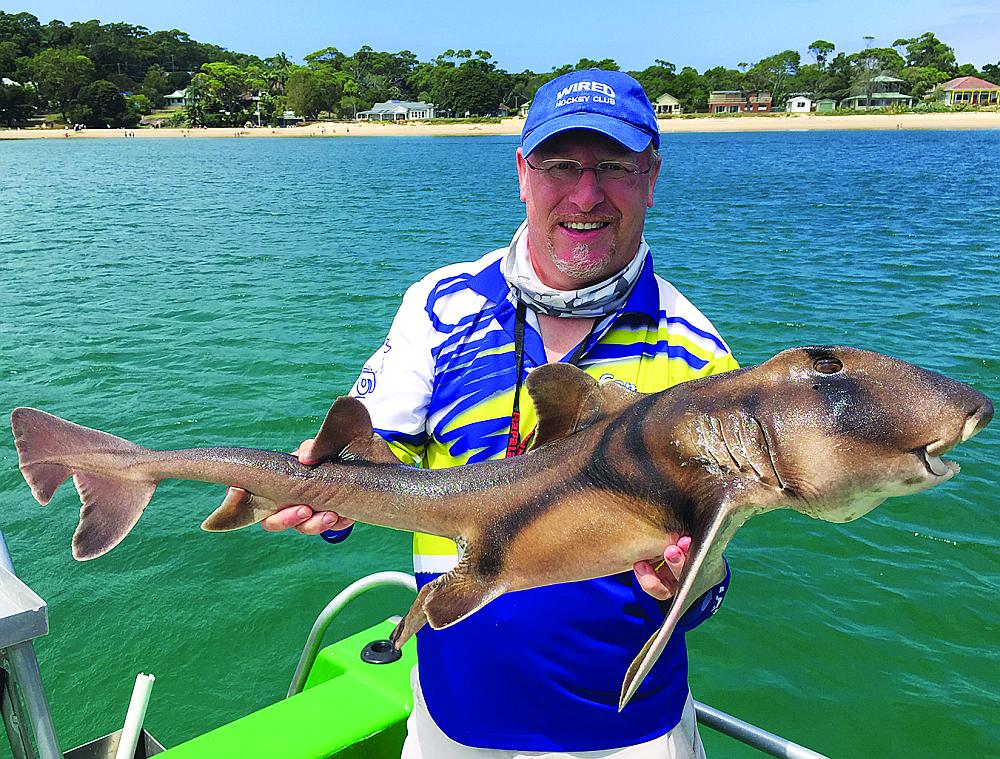
ANSWER:
Gid-day, Steve. That is indeed a Port Jackson shark (Heterodontus portusjacksoni). These interesting little sharks belong to the family Heterodontidae (bullhead and horn sharks), a group of eight species of bottom-dwelling sharks with no anal fin, and spines on the leading edge of their two dorsal fins. Horn sharks occur only in the Indian and Pacific oceans, with the Port Jackson shark being found only in southern Australia on inshore rocky reefs from south Queensland to Tasmania and Western Australia. This species is one of the larger representatives of the group, growing to around 5½ feet long, second only to the Mexican hornshark (H. mexicanus), which grows a couple of inches longer, found in the waters around Baja California.
The common names — bullhead and horn shark — stem from their blunt heads with hornlike protuberances above the eyes. The Port Jackson shark was so named because it was first described by scientists from specimens taken from Port Jackson during the very earliest days of European settlement of Australia. They’re bottom feeders with strong grinding teeth used to crush hard-shelled prey, including crabs, mollusks and sea urchins. Whenever scientists try to identify stomach contents in Port Jackson sharks, the prey items tend to be ground up into pieces too small to identify properly, suggesting they follow your mother’s advice to chew food thoroughly before swallowing.
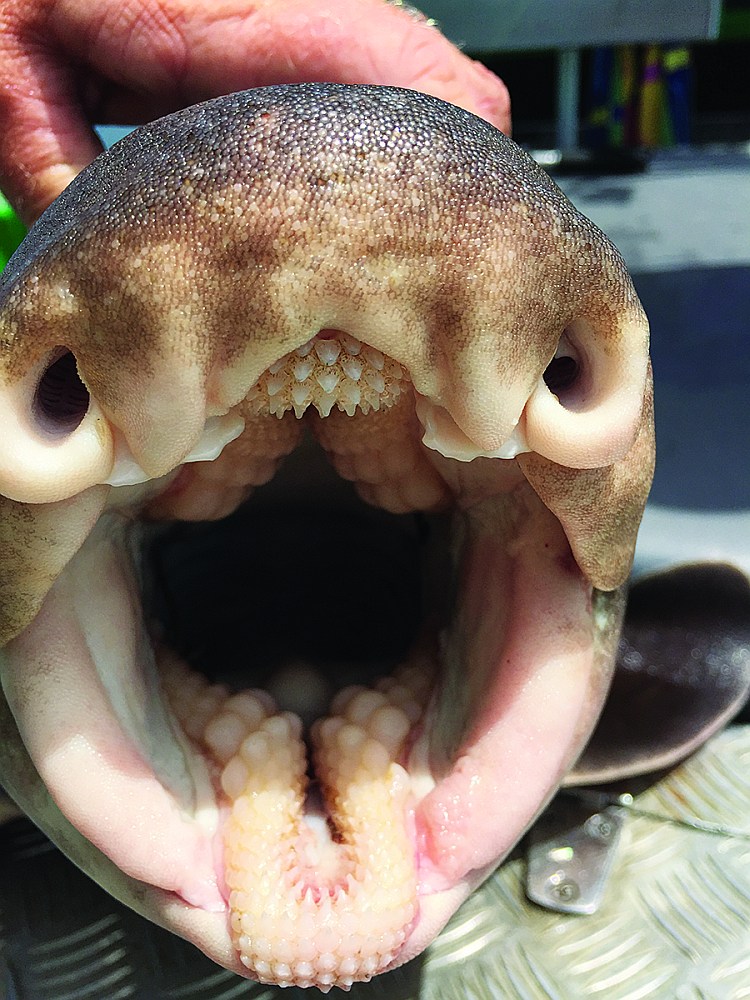
Not being good eating, Port Jacksons are not targeted commercially, and are almost universally released when captured by recreational anglers. Studies of their post-release survival suggest they are tough, with high survival rates when released from commercial gill-net, trawl and longline gear. These sharks are long lived (up to 30 years) and grow slowly — around 50 percent of females mature at just over 2½ feet in length when 11 to 14 years old. Like other members of the family Heterodontidae, Port Jackson sharks are oviparous, with females depositing pairs of eggs on the seafloor every few weeks during the winter months (up to 16 eggs per breeding season). The spiral-shaped egg capsules then incubate for 10 to 11 months, with high mortality rates of eggs (up to 90 percent) during this time. When the survivors eventually hatch, they’re 7 to 8 inches long.
— Ben Diggles
Coney, No Baloney
QUESTION:
We caught this fish in September, out of Venice, Louisiana, at an oil rig in 900 feet of water. We found a massive school of them in the upper 80 feet or so, around the rig legs. From my research, they appear to be coneys. All had two black spots just before the tail on their upper sides and two black spots on their lower jaw.
Charles “Chip” White
Pineville, Louisiana
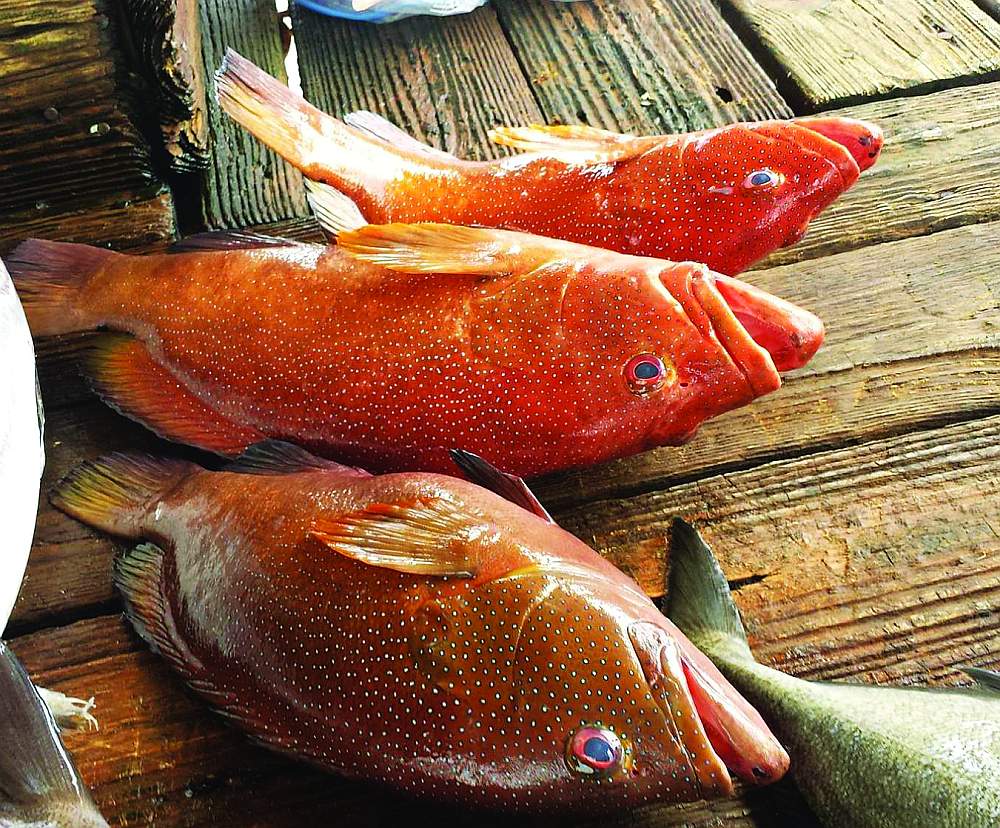
ANSWER:
Chip, your species ID is right on. These are definitely coneys, Cephalopholis fulva, members of the huge family Serranidae, which includes sea basses, groupers and others. Those black spots on the lower jaw and on the area behind the dorsal (the caudal peduncle) are key identifiers. Using color patterns to identify members of this family is precarious because so many species have variable patterns that can change almost instantaneously. For example, coneys have three basic patterns: a brilliant lemon yellow; a two-toned pattern with a rich dark-brownish tan above and lighter below; and the third phase, as in your fish, brownish overall. All phases may have multiple small, usually bluish spots. Other family members have comparable talents for color variations.
Coneys are small — normally less than a foot — compared to other reef-dwelling sea basses and groupers. Widespread, coneys range from about South Carolina and throughout the Gulf south to southern Brazil. Anyone fortunate enough to capture a small live coney could find it to be a most fascinating and colorful resident of a home fish tank.
— Bob Shipp
No Shrinking Violet
QUESTION:
I caught this creature in Buzios (Rio de Janeiro), Brazil, with an artificial bait. I would like to know the name of this species.
Livio Massa
Rio de Janeiro, Brazil
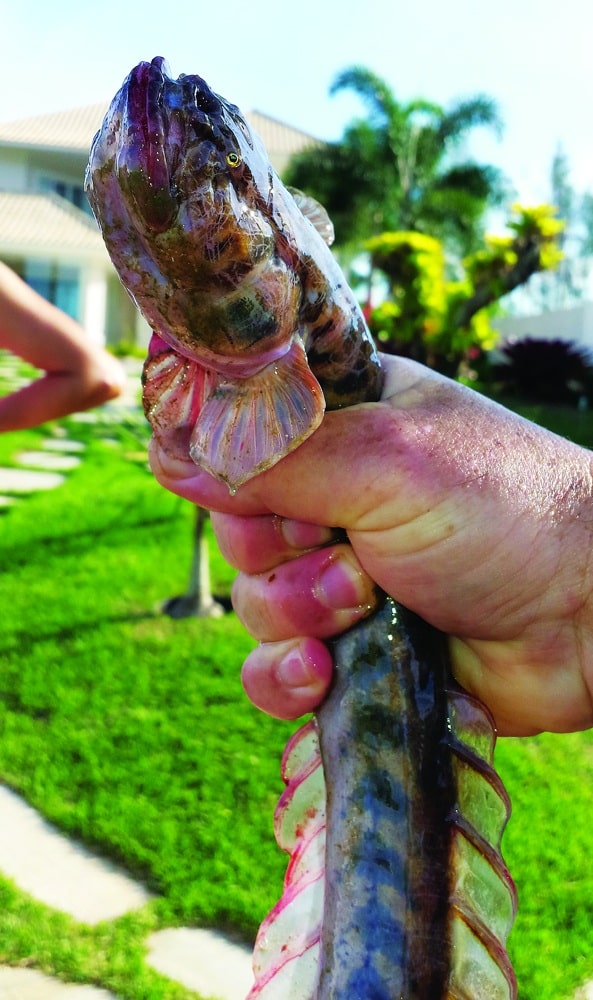
ANSWER:
You managed to catch the largest goby in the tropical western Atlantic region, the violet goby, Gobioides broussonnetii. This eel-like giant of the goby clan is known to reach a length of over 20 inches. It ranges from South Carolina through Brazil, including the Gulf of Mexico, usually in areas with muddy bottoms. It can tolerate a wide range of salinities and has been reported from fresh, brackish and marine water, both nearshore and offshore. However, it’s most often encountered in muddy bays and estuaries. I’ve never seen anything published regarding its food value, but gobies are eaten in other parts of the world, and this one certainly grows large enough to fry up!
— Ray Waldner
From the Fish Facts Archives
SHORTBILL SPEARFISH (Tetrapturus angustirostris)
One of the smallest of billfishes, and certainly sporting the shortest of bills (per its name), this spearfish — one of several species — is native to the Pacific and Indian oceans. While the all-tackle world record of 110 pounds, 3 ounces was taken near Sydney in 2008, shortbills are generally far smaller. Despite their small size, their aggressive behavior means many are caught on trolled lures intended for much larger fish. The waters of Hawaii and New Zealand are best bets for anglers trying for this rarest species in a billfish slam.
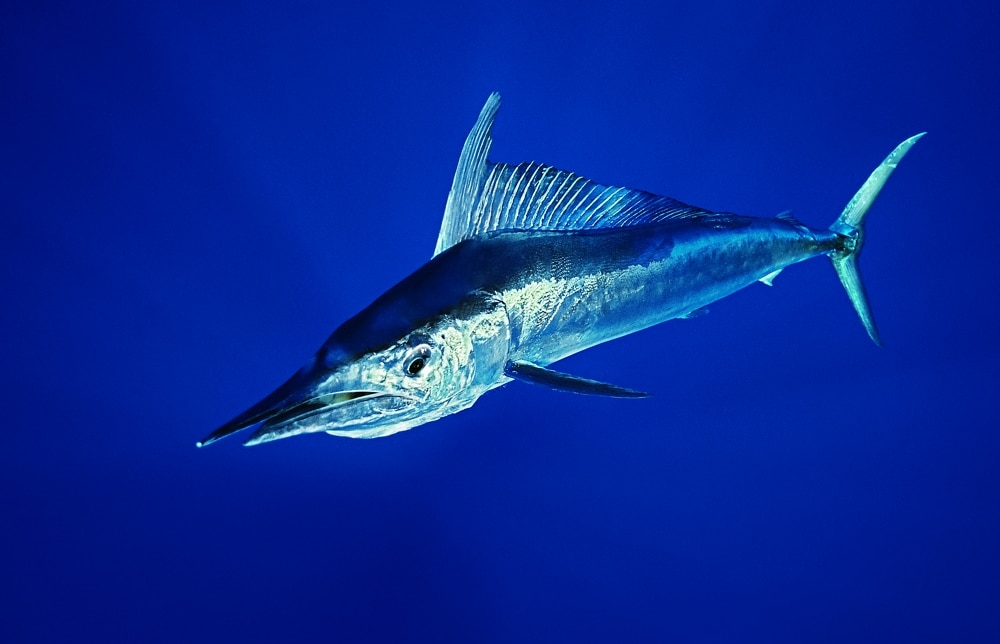
Sport Fishing‘s Prestigious International Panel of Experts
Northeast
Mike Fahay, Sandy Hook Marine Lab, New Jersey
Southeast
Ray Waldner, Ph.D., Palm Beach Atlantic University, Florida
Gulf of Mexico
Bob Shipp, Ph.D., University of South Alabama
West Coast
Milton Love, Ph.D., UCSB, California
Far Pacific
Ben Diggles, Ph.D., Queensland, Australia
Bluewater Pelagics
John Graves, Ph.D., Virginia Institute of Marine Science
CHALLENGE OUR EXPERTS (And Win Up to 10,800 Yards of Line!)
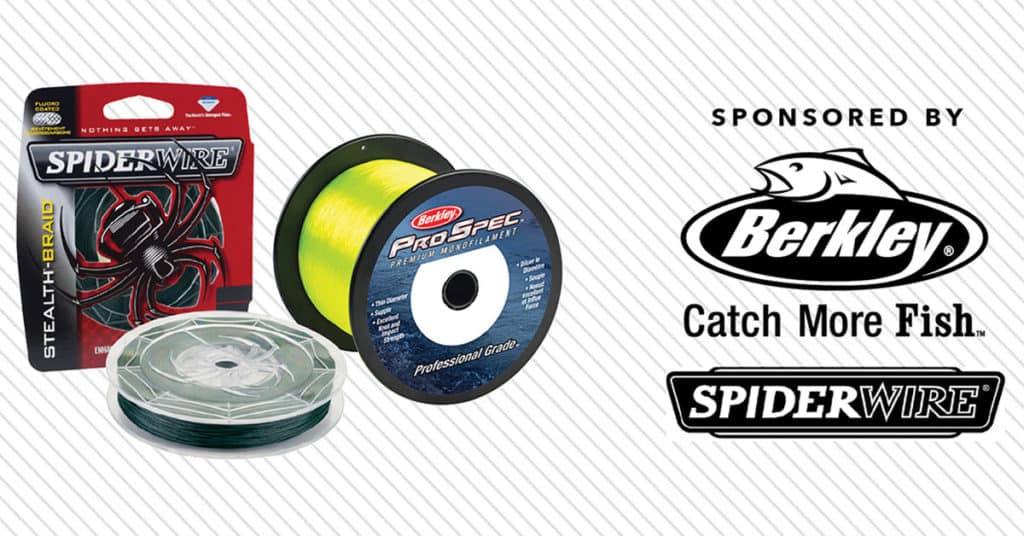
Send in your question and any relevant photos of your mysterious catch or observation for our experts’ ID and feedback. If we publish your question and you have a shipping address within the United States or Canada, you’ll win a 3‑pound spool of Berkley Pro Spec ocean-blue or fluorescent-yellow monofilament (1,000 to 10,800 yards, depending on line strength) or a 1,500‑yard spool of Spiderwire Stealth braid up to 100‑pound‑test! Send questions and images via email to fishfacts@sportfishing.com (include your hometown) or via post to Sport Fishing Fish Facts, 460 N. Orlando Ave., Suite 200, Winter Park, FL 32789.
